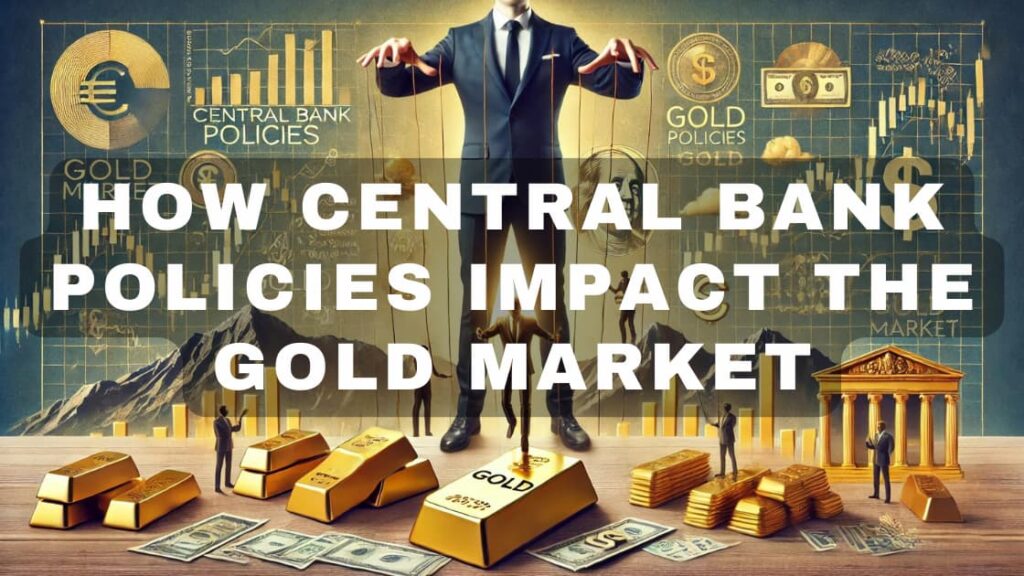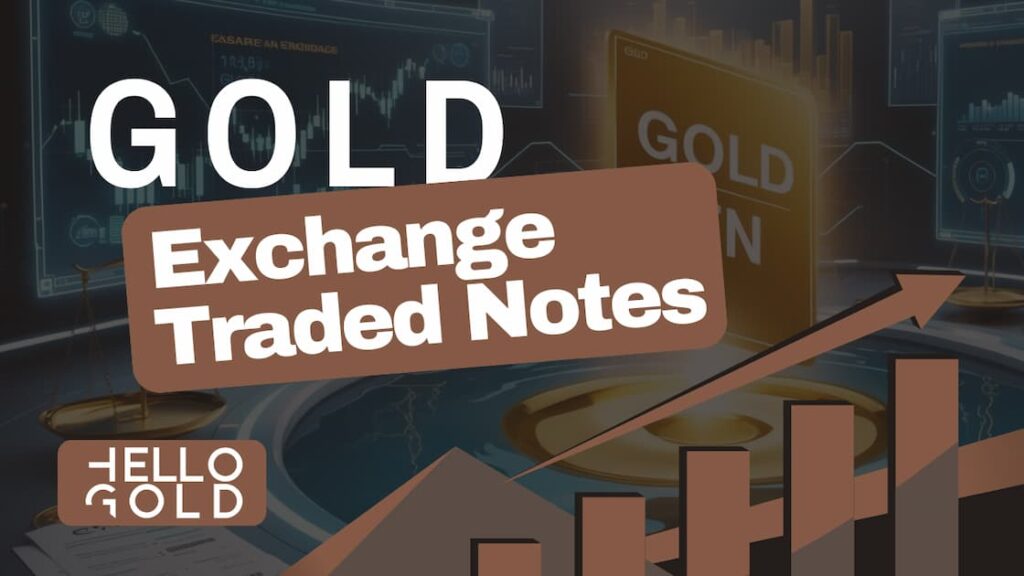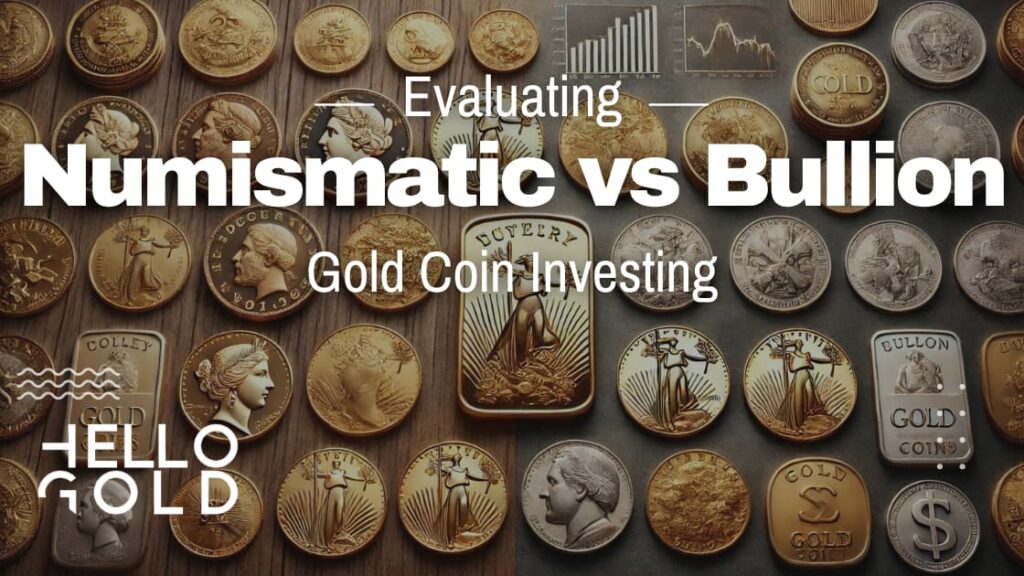Central banks have huge power over world financial markets, including the gold business. Their money policies can greatly impact your investment portfolio.
This article explores the effect of central banks on gold prices, explaining their tools, goals, and historical impacts. Get valuable information to make informed choices and protect your wealth in a constantly changing economic landscape.
Understanding Central Banks and Their Influence
Central banks are key institutions in the global financial world, having a big influence over various markets, including gold. Their decisions and policies can create effects that smart investors should watch closely.
Let’s look at the role of these financial powerhouses and how their actions can impact investment strategies, particularly in the gold market.
The Role and Power of Central Banks
Central banks serve as the financial foundations of national economies, tasked with keeping monetary stability and implementing economic policies that encourage growth. Major players like the Federal Reserve, the European Central Bank (ECB), the Bank of Japan, and the People’s Bank of China have influence that goes far beyond their borders.
These institutions shape economic conditions through various methods. By adjusting interest rates, they influence borrowing costs across the economy, affecting everything from mortgage rates to business loans.
Their decisions can strengthen or weaken a country’s currency, impacting international trade and investment flows.
When central banks lower interest rates, it typically weakens the national currency, which often leads to an increase in gold prices as investors look for other ways to store value.
Moreover, central banks play a crucial role during economic crises.
The 2008 financial crisis saw central banks worldwide implement unprecedented measures to stabilize the global economy.
These actions had a big impact on the gold market, with prices rising significantly as investors sought safe-haven assets amid economic uncertainty.
Key Monetary Policy Tools
Central banks use several tools to implement monetary policy, each with potential effects on the gold market;
Interest Rate Adjustments
By setting key interest rates like the federal funds rate, central banks influence the cost of borrowing throughout the economy. Lower interest rates can make gold more attractive as it reduces the opportunity cost of holding non-yielding assets.
Open Market Operations
This involves buying or selling government securities to control the money supply and influence interest rates. Large-scale purchases, such as those seen during quantitative easing programs, can lead to currency devaluation and increased inflation expectations, both of which typically benefit gold prices.
Reserve Requirements
Central banks can adjust the amount of money commercial banks must hold in reserve, affecting their lending capacity. Changes in reserve requirements can impact overall liquidity in the financial system, indirectly influencing gold prices.
Quantitative Easing (QE)
In times of economic stress, central banks may implement QE, purchasing large amounts of securities to inject liquidity into the financial system. QE programs often lead to increased inflation expectations and currency devaluation, factors that traditionally support gold prices.
Forward Guidance
Central banks use communication strategies to influence market expectations about future monetary policy decisions. Clear forward guidance can significantly impact gold prices by shaping investor expectations about future economic conditions.
Central Bank Objectives
Understanding central bank objectives is key to predicting their actions and potential effects on precious metal valuations.
Central banks aim to keep inflation under control, typically targeting a low, stable inflation rate. When inflation rises above target levels, it often leads to increased demand for gold as a hedge against currency devaluation.
Many central banks, like the Federal Reserve, have a dual mandate that includes fostering maximum sustainable employment. Policies aimed at boosting employment often involve expansionary monetary measures, which can be supportive of gold prices.
Central banks act as lenders of last resort and regulate the banking sector to maintain overall financial stability. During periods of financial instability, gold often benefits from its status as a safe-haven asset.
While pursuing their main objectives, central banks must balance short-term economic stimulation with long-term sustainable growth. This balancing act can lead to policy shifts that create opportunities in the gold market.
By understanding these objectives and tools, investors can better predict how central bank actions might impact the gold market. For instance, if a major central bank signals a shift towards a more accommodative monetary policy, it could potentially lead to weaker currency values and rising price level forecasts, two factors that often boost gold prices.
The Mechanics of Central Bank Influence on Gold Prices
Understanding the complex relationship between central bank policies and gold prices is crucial for investors looking to diversify their portfolios. This knowledge can provide valuable insights into market trends and potential investment opportunities.
Let’s examine the key ways through which central banks influence the gold market.
Interest Rates and Gold Prices
The interplay between monetary policy and gold valuations is key to understanding the gold market dynamics.
Generally, there’s an inverse correlation between these two factors.
As monetary authorities ease their stance on borrowing costs, gold prices tend to rise, and vice versa.
This relationship stems from the economic trade-offs associated with gold ownership.
As a non-yielding asset, gold becomes more attractive when interest rates are low, as the financial sacrifice of keeping it in one’s portfolio decreases.
On the other hand, when interest rates are high, the potential gains foregone by holding the precious metal increase, potentially making interest-bearing assets more appealing.
It’s important to note that real interest rates, which account for inflation, are particularly important for gold investments.
When real rates are negative or very low, gold often becomes more attractive as a store of value. This is because the purchasing power of interest-bearing assets may be decreasing due to inflation, while gold maintains its value.
Historical evidence supports this relationship. During periods of low interest rates, such as after the 2008 financial crisis, gold prices have shown significant increases.
However, it’s crucial to remember that while this relationship is generally consistent, individual economic circumstances can lead to variations.
Inflation Expectations and Gold Demand
Gold’s reputation as a hedge against inflation is well-known in the investment community.
Central banks are pivotal in molding inflation expectations through their policies and communications.
When investors expect higher inflation, they often turn to gold to preserve purchasing power.
The concept of negative real interest rates is particularly relevant here. When the inflation rate exceeds nominal interest rates, real rates turn negative.
This scenario typically drives gold prices up as it decreases the value of cash and fixed-income investments. In such environments, gold often performs better than other asset classes.
Historical performance provides strong evidence of gold’s behavior during inflationary periods.
For instance, during the high inflation years of the 1970s, gold prices saw a dramatic increase.
However, one must bear in mind that past performance doesn’t guarantee future results, and the effectiveness of gold as an inflation hedge can vary depending on specific economic conditions.
Investors should pay close attention to signals from central banks regarding their monetary policy stance. When central banks hint at loosening financial conditions, this typically sparks a rise in inflation expectations, which can be positive for gold prices.
Currency Valuations and Gold
Currency fluctuations, particularly in the U.S. dollar, have a significant impact on gold prices.
There’s typically an opposite relationship between the strength of the dollar and gold prices. When the dollar weakens, gold often becomes more expensive in dollar terms, with the opposite effect occurring when the dollar strengthens.
This relationship is crucial for investors to understand, as it can provide insights into potential gold price movements based on currency trends. For example, periods of dollar weakness often coincide with rising gold prices, as seen in recent years.
Currency wars, where countries engage in competitive devaluations to gain a trade advantage, can also impact gold prices. In such scenarios, gold often serves as a stable store of value, attracting investors seeking to protect their wealth from currency fluctuations.
In economies facing severe instability, gold can even serve as a de facto currency. This underscores gold’s enduring value as a financial asset, particularly in times of economic uncertainty.
To use this knowledge effectively, investors should:
- Monitor central bank policies and communications closely, particularly regarding interest rates and inflation targets.
- Stay informed about global economic indicators that might influence currency valuations.
- Consider the potential impact of geopolitical events on currency stability and gold demand.
- Regularly review their portfolio allocation to ensure it aligns with their risk tolerance and investment goals, considering gold’s role as a potential hedge against currency fluctuations and inflation.
It’s worth noting that central banks themselves have been showing increased interest in gold.
In Q1 2024, central bank net demand reached 290 tons, making it the strongest start to any year on record.
Over the past two years, central banks have purchased record amounts of gold, adding 1,037 tons in 2023 and 1,082 tons in 2022.
This trend underscores the ongoing importance of gold in the global financial system.
Historical Case Studies: Central Banks and Gold
To really understand how the gold market works, it’s important to look at how central bank policies have affected gold prices over time. Let’s explore key historical events that have greatly shaped the precious metals landscape.
The 2008 Financial Crisis and Its Aftermath
The 2008 financial crisis was a turning point that changed the relationship between central banks and the gold market. As the global economy faced huge challenges, central banks worldwide took extraordinary steps.
The Federal Reserve led the way with aggressive monetary easing, cutting interest rates to near-zero levels and starting extensive Quantitative Easing (QE) programs. The European Central Bank (ECB) and Bank of Japan (BOJ) followed suit, creating a global environment of very loose monetary policy.
The impact on gold was huge. From 2008 to 2011, gold prices saw a remarkable rise, reaching levels that were previously thought impossible.
This period highlighted gold’s function as a financial sanctuary during times of economic uncertainty and potential currency devaluation.
For investors, this era showed that including gold in a portfolio can be a vital hedge against economic trouble. The dramatic price increase showed gold’s potential to protect wealth when traditional assets struggle.
The Taper Tantrum of 2013
In May 2013, the Federal Reserve’s announcement of plans to taper its QE program triggered a big market reaction, now known as the “Taper Tantrum.” This event provided key insights into how sensitive gold prices are to shifts in monetary policy expectations.
The market response was quick and severe. Bond yields spiked dramatically, emerging market currencies lost value rapidly, and gold prices saw a sharp decline.
This event not only highlighted the challenges central banks face when trying to normalize policy after long periods of accommodation but also showed the potential for market overreactions to policy changes.
For investors, the Taper Tantrum emphasized the importance of being ready for potential volatility in gold prices during periods of policy transition. It also underscored the critical role of clear communication from central banks in preventing market disruptions.
Recent Policy Shifts (2015-2021)
The period from 2015 to 2021 was marked by significant shifts in central bank policies globally, providing a rich tapestry of events for analysis.
From 2015 to 2018, the Federal Reserve gradually raised interest rates, signaling confidence in economic recovery. At the same time, the ECB kept its negative interest rate policy, while the Bank of Japan implemented yield curve control to keep 10-year government bond yields around 0%.
The start of the COVID-19 pandemic in 2020 prompted a dramatic reversal in monetary policy.
Central banks worldwide cut interest rates and reintroduced or expanded QE programs.
The Federal Reserve, in particular, implemented unlimited QE, marking a new era of monetary policy.
Gold prices during this period reflected these policy shifts. After staying relatively stable from 2015 to 2018, gold prices began to climb in 2019 and reached unprecedented levels amid the pandemic-induced uncertainty in 2020.
The economic landscape during this time illuminated gold’s dual role as both a safe-haven during crises and a hedge against potential inflation resulting from expansionary policies. It showed the complex interplay between monetary policy, economic conditions, and gold prices.
Interestingly, central banks themselves have shown increased interest in gold recently.
The first quarter of 2024 saw monetary authorities amass a staggering 290 tons in net gold purchases, marking an unprecedented surge in acquisitions for the initial three months of the year.
The appetite for gold among monetary authorities has been particularly voracious in recent times, with acquisitions exceeding 1,000 tons annually for two consecutive years.
This sustained high level of purchases reflects gold’s continuing relevance in central bank reserves and the global financial system.
Current Monetary Policy Landscape
The global monetary policy landscape is going through big changes, creating both challenges and opportunities for investors interested in alternative assets.
Central banks worldwide are using unusual strategies to address economic uncertainties and promote stability.
This changing environment requires a deep understanding of how monetary policies interact with various investment options, including precious metals, real estate, and other alternative assets.
Global Monetary Policy Trends
Major economies are experiencing a notable difference in monetary policies, creating a dynamic and sometimes unpredictable investment climate.
The Federal Reserve has begun reducing its asset purchases, signaling a potential shift towards tighter policy.
This contrasts with the European Central Bank and Bank of Japan, which continue to maintain negative interest rates and extensive quantitative easing programs.
The ongoing challenge of the zero lower bound and negative interest rates has forced central banks to explore new tools to stimulate economic growth.
This environment has big implications for both traditional and alternative investments. For instance, negative real yields in many developed economies have made non-yielding assets like gold and certain real estate investments more attractive.
Central banks themselves have been increasing their gold holdings, highlighting the metal’s enduring significance across international monetary landscapes.
In the first quarter of 2024, central bank net gold demand reached 290 tons, marking an unprecedented surge for the opening months of any year.
This trend suggests that even the world’s most powerful financial institutions recognize the value of diversifying their reserves with alternative assets.
Emerging Themes in Central Banking
Digital currencies have become a key focus for central banks globally, with many exploring or developing Central Bank Digital Currencies (CBDCs).
This shift towards digital assets could revolutionize monetary systems and potentially impact the role of traditional safe-haven assets.
For those invested in physical assets like gold or real estate, understanding the implications of CBDCs is crucial for long-term portfolio planning.
Yield curve control has gained popularity as a policy tool, with the Bank of Japan leading the way. This approach allows central banks to target specific long-term interest rates, providing another lever for monetary control.
For investors in alternative assets, understanding the implications of yield curve control is essential for portfolio construction and risk management, as it can significantly impact borrowing costs and asset valuations across various sectors.
Climate change considerations are increasingly influencing monetary policy decisions, with central banks incorporating environmental risks into their policy frameworks.
This shift could significantly affect asset valuations across the board, creating new opportunities in sustainable and green investments while potentially challenging traditional sectors.
For investors in tangible assets, this trend could have mixed implications, potentially affecting everything from real estate valuations to the operational costs of precious metal mining.
Future Directions for Monetary Policy
The path to interest rate normalization remains uncertain and full of potential pitfalls. Central banks must perform a delicate balancing act, addressing inflationary pressures while supporting economic recovery.
This challenge is evident in the current economic landscape, where regional variability in growth patterns is becoming more pronounced. In 2024, we’re seeing a difference in economic growth across different regions, which could lead to out-of-sync monetary policies globally.
This difference creates both risks and opportunities for alternative investments. Assets like gold, certain types of real estate, and other tangible investments could benefit from this uncertainty, as they often serve as stores of value during periods of economic instability or currency fluctuations.
Balance sheet management strategies will be crucial as central banks navigate the unwinding of extensive asset purchase programs.
The pace and manner of this process could have significant impacts on financial markets and investment opportunities.
Those with stakes in non-traditional investment vehicles may experience increased volatility, but could also benefit from potential upside if the unwinding process creates economic uncertainty or inflationary pressures.
International coordination of monetary policies may become increasingly important as global economic challenges persist.
The interconnectedness of financial markets necessitates a coordinated approach to maintain stability and prevent unintended consequences.
This trend towards greater cooperation could lead to more predictable policy outcomes, but it also underscores the importance of diversification across different economic regions and asset classes.
Preparing for the next economic crisis remains a priority for central banks. This involves building policy buffers, enhancing regulatory frameworks, and developing new tools to respond to future shocks effectively.
For investors, this emphasis on resilience highlights the importance of including robust, crisis-resistant assets in a well-diversified portfolio. Alternative investments, with their potential for non-correlation with traditional financial markets, could play a crucial role in this regard.
Implications for Gold Investors
The intricate interplay between monetary policy decisions and gold valuations creates a tricky landscape for investors. Understanding these connections is key for making smart decisions and taking advantage of opportunities within the precious metal’s ecosystem.
Short-term Impacts on Gold Prices
Central bank decisions can greatly influence gold prices in the short term. When major institutions like the Federal Reserve signal changes in monetary policy, gold often experiences big price movements.
For example, the expected Federal Reserve cutting cycle, set to begin in November 2024, is likely to have a positive effect on gold prices.
To handle these short-term impacts effectively, investors should:
- Watch central bank meetings closely. Pay attention to both the decisions made and the language used in policy statements. Each word is carefully chosen and can give insights into future policy directions.
- Develop a strategy for economic data releases. Key indicators such as inflation rates, GDP growth, and employment figures can provide insights into future central bank actions. Creating a calendar of important releases and developing a way to interpret this data in the context of gold prices can be helpful.
- Consider implementing trading strategies around major announcements. This might involve adjusting gold holdings based on expected policy outcomes. However, it’s important to remember that market reactions can be unpredictable, requiring strong risk management techniques.
Long-term Outlook for Gold
Several factors support a positive long-term outlook for gold.
The trend of central banks buying gold reserves continues to be strong, showing ongoing institutional confidence in gold as a reserve asset.
The opening months of 2024 saw central banks’ net gold acquisitions soar to an unprecedented 290 tons. This trend follows record purchases surpassing the 1,000-ton mark yearly in the previous two years, highlighting the growing importance of gold in central bank reserves.
Ongoing global tensions and economic uncertainties further solidify gold’s position as a financial sanctuary. These geopolitical factors often drive investors towards gold during times of crisis, potentially supporting long-term price stability and growth.
Additionally, despite central bank efforts, inflation remains a concern in many economies. This ongoing inflationary pressure continues to enhance gold’s appeal as an inflation hedge, as it has historically maintained its value during periods of currency devaluation.
However, we must consider that potential challenges exist in the extended prospects for the precious metal.
The interest rate environment plays a crucial role in gold prices. While higher interest rates typically pressure gold prices by increasing the appeal of income-generating investments, historical data shows this relationship isn’t always straightforward.
Gold prices have sometimes risen during periods of increasing interest rates, highlighting the intricate dance between central bank decisions and the precious metal’s market value.
Another factor to consider is the potential for strong global economic recovery. Such a scenario could potentially reduce demand for safe-haven assets like gold, as investors might shift towards riskier, higher-yielding assets.
However, in the current low-yield environment, the precious metal’s function as a portfolio stabilizer becomes even more critical. Its lack of correlation with traditional assets can provide valuable protection against market volatility and potential currency devaluations, making it an important component of a well-balanced investment strategy.
Risks and Opportunities
Gold price volatility presents a dual landscape of potential pitfalls and rewards for investors. To navigate this landscape effectively:
Risks
- Price volatility: Gold prices can experience significant changes, particularly in response to geopolitical events, shifts in monetary policy, or changes in global economic conditions.
- Opportunity cost: In periods of economic growth and rising interest rates, the financial drawback of holding assets that don’t yield returns like gold can increase.
- Market sentiment: Gold prices can be influenced by market sentiment and speculative activity, sometimes leading to price movements that may not align with fundamental factors.
Opportunities
- Portfolio diversification: Gold’s low correlation with other asset classes makes it an effective tool for portfolio diversification.
- Inflation hedge: Gold has historically served as a bulwark against currency devaluation, potentially preserving purchasing power during periods of inflation.
- Safe-haven demand: During times of economic or geopolitical uncertainty, a surge in gold’s popularity as a financial sanctuary can drive prices higher.
Strategies for managing risks and capitalizing on opportunities:
Implement risk management tools. Consider using stop-loss orders or options strategies to protect against downside risk.
Stay informed. Develop a systematic approach to monitoring potential catalysts for gold price movements, including central bank policies, geopolitical events, and economic indicators.
Consider dollar-cost averaging. This strategy can help reduce the impact of short-term volatility on gold investments.
Diversify within gold holdings. Consider a mix of physical gold, gold ETFs, and gold mining stocks to spread risk and capitalize on different aspects of the gold market.
Balance gold exposure with other assets. Aim for a gold allocation that aligns with overall investment goals, risk tolerance, and market outlook.
Monitor central bank activities. With over 80% of reserve managers expecting official sector gold demand to rise, staying informed about central bank purchasing trends can offer crucial clues about potential price movements.
By understanding these implications and implementing a thoughtful strategy, investors can effectively leverage gold’s unique properties to enhance their investment portfolio’s resilience and potential returns. In an ever-changing financial landscape, gold continues to be a cornerstone of modern investment strategies, offering both protection and opportunity for those who understand its dynamics.
Reflections
Central banks affect gold prices through money policies. Stay up-to-date on interest rates, inflation, and currency values to make smart gold investments.
Closely watch central bank news and economic information. Add gold to your portfolio to guard against inflation and economic doubt.
Mix gold with other investments to lower risk. Take action now to build a tough, diverse portfolio that can handle market shifts.











